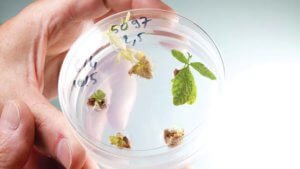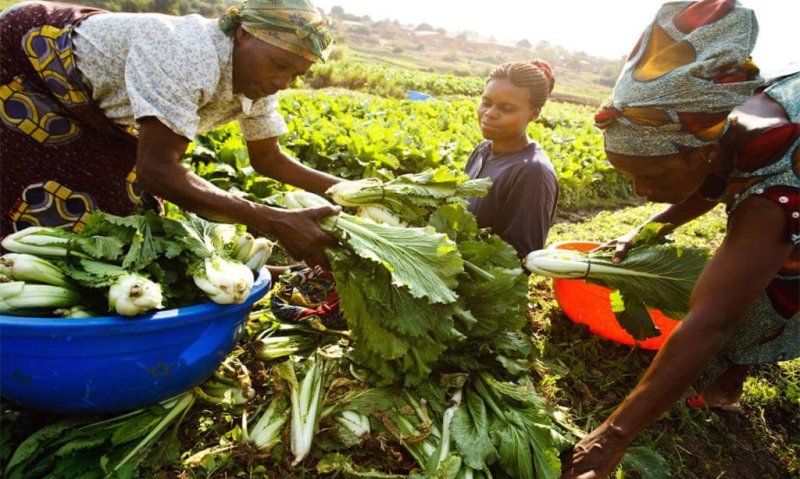[S]cientific inventions may cause harm to humans and that, this harm may not be apparent for many years. Therefore, manufacturers, inventors and introducers of genetic modified or engineered products must ensure that their products are safe and as such, accept strict liability in case the product does cause harm
The president’s trepidation about crop biotechnology has no basis in science and is largely due to the influence of Western environmental groups on African policy makers, which frustrated Ugandan researchers have repeatedly made clear:
As plant scientist Arthur Tugume pointed out in the video above, experts don’t share Museveni’s concerns about genetic engineering, because GE technology is used to produce medicine and imported food Ugandans already consume. Critics of genetic engineering have attempted to obfuscate this fact by claiming that GE crops represent some (so-far undiscovered) apocalyptic danger to humanity, while ignoring the real risks that go with rejecting the use of genetic engineering in agriculture.
If the United Nations’ Sustainable Development Goals (SDGs) to eliminate hunger and poverty are to be met by 2030, Africa will need every tool of modern agriculture, including GE and gene-edited crops bred with CRISPR and other new breeding techniques (NBTs). It is time for African nations to leave the fear-based myths behind and embrace technology for the betterment of the continent.
A primer on plant breeding
Every time we breed a crop (or animal), we change the DNA of that organism. With traditional breeding we cross two plants and get a mixture of DNA from the parent plants that represents a brand-new combination of DNA never seen before. This method of breeding has been in use for so long that people consider it to be safe.
About 80 years ago, scientists began using radiation and, less often, harsh chemicals to cause random changes (mutations) in the DNA of our food crops, a breeding technique known as mutagenesis. When a seed is exposed to either of these treatments, thousands of changes are made to the DNA. If the treatment produces a desirable trait, the plant becomes part of the food supply. We have never known precisely what changes, how many changes, or even what type of changes were made. There are literally thousands of food crops, including organic varieties, with random DNA mutations in their pedigree. This method of breeding has proven to be safe over the last century and remains unregulated.

Now with GE technology (aka GMO), scientists engineer a crop to express a specific trait, say insect resistance, by adding a carefully selected DNA segment to the plant’s genome. A limited number of unintended changes also occur with this process, but these types of crops are heavily regulated and subjected to millions of dollars and at least 10 years worth of testing before they can be released to farmers.
Fear-based regulation threatens the poorest among us
Critics claim the relatively few changes induced by genetic engineering represent unacceptable risks. This makes no sense. Huge numbers of changes created by traditional breeding rarely cause problems, so how could a few, very specific changes generated by modern breeding techniques present huge risks? Answer: they can’t. Although Europe’s politicians continue to outlaw GE crop cultivation, the continent’s scientists say such crops are not especially dangerous. According to the 2010 European Commission report “A decade of EU-funded GMO Research 2001-2010”:
The main conclusion to be drawn from the efforts of more than 130 research projects, covering a period of more than 25 years of research, and involving more than 500 independent research groups, is that biotechnology, and in particular GMOs, are not per se more risky than conventional plant breeding technologies.
But experts go further than assuring us that genetic engineering poses minimal risk to human health, as the European Academies of Science Advisory Council explained in its 2013 report:
There is compelling evidence that GM crops can contribute to sustainable development goals with benefits to farmers, consumers, the environment and the economy …. It is vital that sustainable agricultural production and food security harnesses the potential of biotechnology in all its facets.
Further advancements include the most precise breeding methods ever invented by humans, collectively known as New Breeding Techniques (NBTs). These approaches allow researchers to edit or delete specific genes, usually without transferring DNA between species, one of the primary distinctions between genetic engineering and gene editing. Crop varieties produced by NBTs are now beginning to hit the market, and critics, many of them organic food proponents, claim the even smaller number of off-target changes seen with NBTs represent an even greater risk to humans. This is quite literally backwards. Technology becomes safer as it grows more precise.
The history of GE regulation is one of obstruction and lost opportunities in the developing world. It is imperative that policy makers consider the risks of NBTs relative to those posed by older breeding methods. This is the only way to regulate the technology commensurate with the actual risk it presents, which protects consumers while allowing innovation to improve the lives of the poorest among us. Failing to do so means handicapping the developing world as the climate grows more hostile and a booming global population demands more food. Farmers around the world understand this, and they’re eagerly embracing crop biotechnology. It’s time for politicians to do the same.
Robert Wager has been a faculty member of the biology department at Vancouver Island University for 24 years. He specializes in public outreach on Genetically Engineered crops and derived foods. Follow him on Twitter @RobertWager1 and his website































